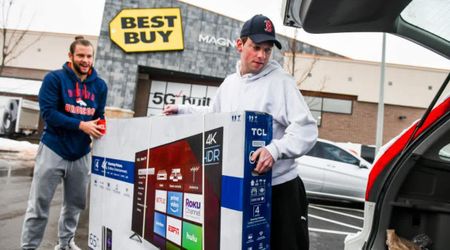Air Taxis Set to Transform Urban Commutes with Speed and Efficiency

The commencement of the use of air taxis in various global locations, including France, Italy, South Korea, UAE, and Central America, with China already leading the way, marks a significant milestone in the evolution of transportation. This introduction heralds the advent of Advanced Air Mobility (AAM), a burgeoning global movement aimed at introducing a novel mode of transportation utilizing large-scale passenger drones, commonly referred to as electric vertical takeoff and landing (eVTOL) aircraft.
Travel around Dubai in minutes: How air taxis will speed up your daily commute
— Gulf News (@gulf_news) February 19, 2024
Air taxi from Dubai airport to Palm Jumeirah will only take 10 minutes, Joby Aviation sayshttps://t.co/BZoTPyLQCa
Despite the somewhat cumbersome terminology, the underlying concept is both quiet and sustainable: to facilitate the swift and safe movement of people and goods, surpassing traditional car travel while emitting less noise and carbon emissions than conventional helicopters.
"These things will be coming on the scene, and our job is to try and be ahead of the curve," said Paul Fontaine, an assistant F.A.A. administrator who oversees the modernization of the air transportation system.
View this post on Instagram
While the initial foray into air taxi deployment is still in its infancy, industry analysts anticipate that approximately six models will receive commercial certification by 2026, with widespread integration into mainstream urban transportation systems within the next decade.
"With a lot of new aircraft technology, you bring on one very novel thing, and you work your way through that," said Pat Anderson, a professor at Embry-Riddle Aeronautical University and a co-founder of VerdeGo Aero, a hybrid air taxi company. "In these vehicles, we’re trying to bring many, many things forward, all at once."
🇮🇳Archer announces plans to launch all-electric air taxis in India 🇮🇳
— Adam Goldstein (@adamgoldstein13) November 9, 2023
This morning we announced that we’ll be working with @InterGlobe_IGE – India’s foremost travel and hospitality conglomerate – towards our goal of jointly launching @ArcherAviation’s all-electric air taxis in… pic.twitter.com/ZfPTzBBqiE
Distinguished from single-passenger electric aircraft used primarily for recreational purposes and regional eVTOLs slated to augment existing commercial airline operations, these multi-passenger air taxis are purpose-built for urban environments.
"We think that similar to what we have with cars today, this will be a standard means of transportation for our whole society. And it will become as normal for us in 2030, '40, '45 time frame to use an eVTOL as we're using cars today," said Daniel Wiegand, co-founder, and CEO at Lilium- Air Mobility Company.

These vehicles are poised to become ubiquitous fixtures in major urban centers such as New York, London, and Paris, while also playing a pivotal role in alleviating ground congestion in sprawling megacities like Sao Paulo, Mumbai, and Cairo. The overarching goal of AAM, however, extends beyond mere accessibility, aiming to increase the frequency of aviation-related benefits for a broader demographic.
Air taxis are expected to operate via the concept of the Small Airport Transportation System (SATS), which aims to use thousands of local airports in the US instead of relying on large ones. However, the authorities are still trying to develop safer and more affordable routes for small aircraft that can operate alongside major airliners whilst providing the benefit of costs.
View this post on Instagram
While air travel remains an experience largely inaccessible to approximately 80 percent of the global population, the advent of air taxis promises to reshape this landscape dramatically.
While the concept of air taxis holds great promise, there are still several challenges that need to be addressed before they become a widespread reality. These include regulatory frameworks, infrastructure development, safety measures, noise concerns, and public acceptance.






















